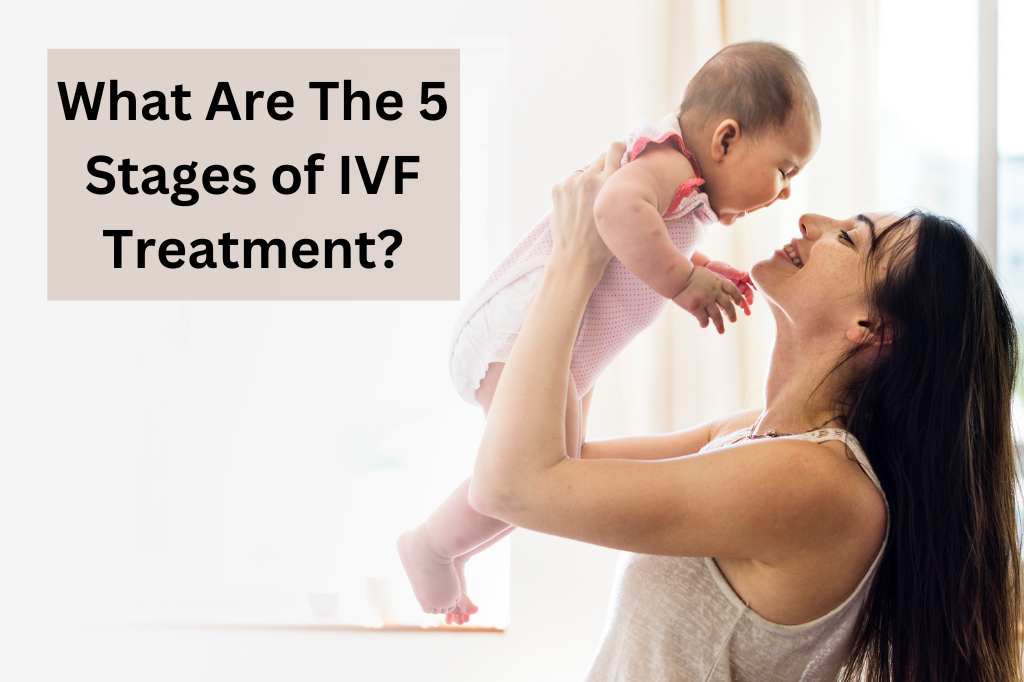What are the 5 stages of ivf treatment?
 Before discussing the stages of IVF fertilization treatment, it is equally important to know some basic information about this IVF treatment. Let’s dig into it.
Before discussing the stages of IVF fertilization treatment, it is equally important to know some basic information about this IVF treatment. Let’s dig into it.
What is in vitro fertilization?
In Vitro Fertilization (IVF) is a common laboratory process that helps in uniting the egg with sperm for fertilization. The entire process is done in a glass tube, i.e. in vitro. This treatment is helpful for people facing issues in a natural pregnancy. Most people have heard of this method of fertilization but are unaware of the process. But this treatment covers a few important stages before fertilization. In this article, you will learn the different stages of IVF treatment.
Who are the patients of IVF Treatment?
In vitro fertilization is an expensive treatment and is taken by people dealing with difficulty in getting pregnant. These are a few cases:
- Older women who face fertility issues
- Women with problems with fallopian tubes
- Endometriosis in women
- Men with low sperm count
5 Stages of IVF process
1) Medication for Ovulation
The first and foremost stage of the IVF process is your good health. After a thorough check-up, your doctor will prescribe you medication to increase the capability of your ovaries to produce more eggs. Doctors prescribe medicines that contain Follicle Stimulating Hormone(FSH) or Luteinizing Hormone(LH) that helps produce more eggs.
Your ovaries need to produce multiple eggs at a time for successful fertilization, as there is a high chance of failure. Doctors perform this fertilizing process on multiple eggs, among which only a few eggs are successfully fertilized. Your doctor will also prescribe other medicines for the eggs to mature and also to avoid premature ovulation. There will be other tests, including blood tests, for regular check-ups. It takes one to two weeks to mature the eggs before removal.
2) Retrieval of Eggs from the Follicles
The second IVF stage of in vitro fertilization treatment is the retrieval of your eggs from the follicles. Your doctor will push a final injection before the removal of eggs. After a day of that, a transvaginal ultrasound will be performed by your doctor to retrieve the eggs. In this process, your doctor will insert a needle through your vagina into the follicles to take out the eggs. The needle is associated with a suction tube to pull out the eggs easily. This might sound painful, but don’t worry; you will be sedated before the procedure.
3) Collection of Sperm
The collection of sperm is the first in the stages of IVF after egg retrieval. This is a comparatively easy and quick process of IVF. Your partner has to give his semen sample to your doctor for further process of fertilization. If your partner has a low sperm count or the quality of sperm is poor, you can opt for a donor to help you out.
Generally, masturbation is the conventional process of taking a semen sample. But sometimes, they take out semen directly from the testicles of your partner. The sperm then is separated from the semen sample in the laboratory.
4) Fertilization in Laboratory
You have to wait at this stage. Your doctor will attempt the fertilization process by combining the eggs and the sperm. It takes a few hours to fertilize an embryo. This can be performed in two processes.
-
Insemination - In this process, the doctors combine the eggs with the sperm. This is the conventional process of fertilization in the laboratory. If the eggs and sperm are healthy enough, this is the best process.
-
Intracytoplasmic Sperm Injection - If the quality of sperm or the count of sperm is not enough for fertilization, then the doctors perform this process. The doctors then directly inject the sperm into the eggs for successful fertilization.
5) Transferring the embryo back to the uterus
This is the last of the stages of the IVF process. Once the embryos are fertilized, they are again transferred back into the lining of your uterus. Your doctor will wait for three to five days before this process. During this period, your doctor will prescribe another medicine to prepare the lining of the uterus. Your doctor will place the embryos into the lining of the uterus through your vagina through a thin tube called a catheter. If at least one embryo implants itself in the lining, it is a success. You are pregnant!
Conclusion
There will be some after-effects of this IVF pregnancy treatment. You might feel some uneasiness for a few days. But you can continue your regular activities after that. There is a high risk of miscarriage in this process, so make sure to take extra care of yourself. Visit your doctor regularly and go through all the tests that your doctor will prescribe you in the meantime.
Hope, you have understood of all the stages of in vitro fertilization, as it is important for you to understand the process before opting for IVF.

